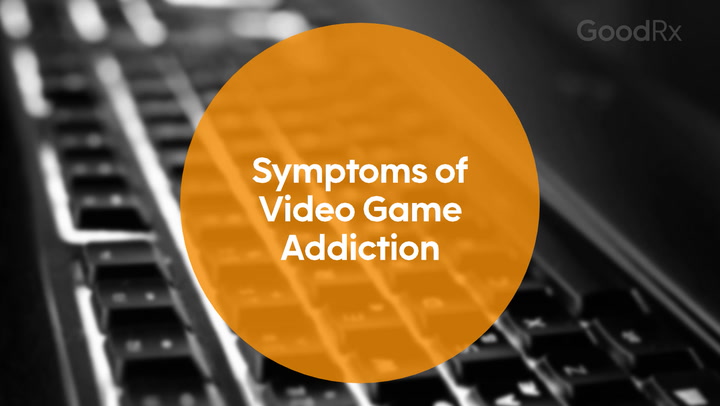
What Is Porn Addiction Withdrawal? Symptoms and Recovery Guide
Key takeaways:
Porn addiction isn’t an “official” mental health diagnosis, but it can cause significant problems in your life that are similar to drug and alcohol use.
If watching pornography is causing issues for you at work, home, or school, it’s possible that you could be dealing with a pornography addiction.
When you have a porn addiction, it can be hard to stop consuming pornography. In some cases, you might even experience porn withdrawal symptoms like restlessness and irritability.
There are many options for porn addiction recovery and porn withdrawal treatment, including therapy, 12-step groups, and inpatient treatment.
Access savings on related medications
Table of contents

When you hear the term “addiction,” you probably think about alcohol or drugs. But other behaviors can lead to addiction, too — including viewing pornography.
And if you’re dealing with a pornography addiction, you may find yourself craving porn, viewing more and more porn over time, and even having withdrawal symptoms when you try to stop. After all, addiction can seriously change the way you think, feel, and behave.
What is pornography addiction?
Pornography addiction is not an officially recognized condition by the American Psychiatric Association (APA). But many experts believe that looking at different kinds of porn over and over can sometimes lead to an addiction.
This is because pornography triggers changes in your brain chemicals, like dopamine. Dopamine is a substance in your brain that’s related to pleasure and motivation. When you view porn, your brain releases dopamine — which can make you want to do it again and again.
What are the symptoms of porn addiction?
The main symptom of pornography addiction is that porn causes problems in your life. This could mean issues at work, home, or school, or in your personal relationships. It might even mean that your porn use is affecting your physical or mental health.
Other pornography addiction symptoms include:
Having a hard time cutting down on your porn use, even when you try
Watching porn more often, or for longer periods of time, than you intend to
Spending less time doing other activities that you enjoy
Having cravings for pornography
Continuing to view porn, even when it’s causing problems in your life
Needing more and more pornography to feel sexually aroused
Feeling restless, irritable, or uncomfortable if you can’t view pornography
Read more like this
Explore these related articles, suggested for readers like you.
It’s worth mentioning that viewing porn doesn’t necessarily mean you’re addicted — even if it’s something you like to do on a regular basis. It’s only an addiction if your porn use is causing problems in your life, especially if you’re having a hard time cutting down.
How to stop porn addiction
It can be hard to stop using porn. In reality, treatment is different for different people. A lot of the time, treatment for a pornography addiction will be similar to substance use treatment. It may include a combination of therapy, medications, and personalized support. Overall, the goal of treatment is to help you cut down on your porn use — or to stop using porn completely.
What is porn addiction withdrawal?
When you view porn, your brain releases feel-good chemicals like dopamine. And when this happens, your brain will attempt to maintain balance. To do this, the brain lowers the response of dopamine it normally releases. This creates a type of tolerance to the porn. At the same time, the brain releases more of another chemical — dynorphin — that counteracts the pleasant effects of dopamine.
When you stop or reduce the behavior, your brain might have too little dopamine and too much dynorphin. This can lead to porn addiction withdrawal.
Porn withdrawal can sometimes be similar to alcohol and other drug withdrawal. This is because when you use alcohol or drugs, it can create changes in your brain. And viewing porn can cause similar changes — and lead to cravings, tolerance, and withdrawal, just like with alcohol and drugs.
Porn addiction withdrawal symptoms
Withdrawal symptoms are often the opposite of how you feel when you’re doing the addictive behavior. If you feel calm, content, and sleepy during or after porn viewing, porn withdrawal will make you feel restless and anxious.
Common porn addiction withdrawal symptoms include:
Anxiety
Depressed mood
Irritability
Insomnia
Aches and pains
Cravings for more porn
You might also feel unwell, tired, and stressed. These unwanted feelings may tempt you to start looking at porn again, and lead to a relapse if you’re trying to quit.
How long do porn withdrawal symptoms last?
It’s hard to say. So far, there hasn’t been enough research to know exactly how long porn withdrawal will last. It may depend on:
How long you’ve been viewing porn
How you consume it (phone, videos, computer, or magazines)
How frequently you consume it
The types of sexual behaviors you perform while watching it
One person could experience mild porn withdrawal for a few days. Meanwhile, another person could have intense symptoms that last for weeks. Experts just don’t know enough at the moment to predict the outcomes.
Coping with porn addiction withdrawal symptoms
Coping with porn addiction withdrawal symptoms is challenging. But you have the power to take simple steps. These efforts will ease the withdrawal effects and increase your chances of recovery.
When withdrawal symptoms are high and you feel strong urges to look at porn again, you can consider:
Changing your thoughts: Thinking about the harms of pornography and the problems it has caused in your life can help maintain your dedication.
Looking for people who support you: Your friends, family members, and other loved ones can provide a needed distraction or kind word to help achieve your goals.
Staying busy: Being idle and bored could be the worst thing for your withdrawal symptoms, so build a routine to keep yourself busy.
Changing your environment: You may need to move your computer, replace your phone, and add porn blocking software to your devices. It’s important to create an environment that makes porn less accessible.
Taking care of your mental health: Stress, anxiety, and depression can all worsen your experience, so seek professional care to help treat the cause.
Taking care of your physical health: Eating well, setting aside enough time for restful sleep, and getting plenty of exercise can be the best way to cope.
Creating these new habits and maintaining them can provide a natural boost of dopamine in the brain. This can help ease the effects of porn withdrawal.
Getting professional help for porn addiction and withdrawal
Admitting you have a problem with porn can be difficult, but it’s an important choice. In some cases, it’s a good idea to get professional help for a pornography addiction and withdrawal. The first step is to talk with a healthcare professional or therapist. From there you may want to move on to working with a mental health professional who has experience working with behavioral addictions.
What type of therapy can help with porn addiction and withdrawal?
Cognitive behavioral therapy (CBT) is helpful for many types of addictions, including behavioral addictions like porn. CBT can also give you tools for managing any withdrawal symptoms you experience, and help you come up with strategies for managing potential relapses.
Family therapy, couples therapy, and psychodynamic psychotherapy can all help, too. Working with a sex therapist can be beneficial — especially if your porn addiction is linked to problems in your sex life, like erectile dysfunction or low libido.
In some cases, inpatient treatment is the best choice. This is when you stay in a rehab facility for an extended period of time, and engage in a structured therapy program designed to help you overcome your addiction.
Self-help options for porn addiction
There are many things you can do on your own to support your recovery. These include tools and resources like:
Online programs for quitting porn
Smartphone apps to help with quitting
Self-help books for porn addiction
Faith-based resources
Peer support groups
Many people also find it’s helpful to join a 12-step group. This can help you connect with others who have had similar experiences with porn addiction, or with pornography addiction withdrawal. Options include:
How long does it take to recover from porn addiction?
It’s hard to say. For some people, it can be easy to walk away from porn — even when it’s causing major problems in their life. But for other people, breaking away from porn can take a longer time. Sometimes, it can even be a lifelong process.
Here are some factors that might affect your recovery timeline:
How long have you been using porn?
How often do you consume porn?
What type of porn do you use?
What circumstances led you to use pornography?
Do you have other mental or physical health problems?
Do you experience withdrawal symptoms when you stop viewing porn?
What types of problems has porn caused in your personal life?
How serious are the problems that porn has caused in your life?
Are you personally invested in recovering from your porn addiction?
Do you have a good support network to help you with recovery?
Can medication help with porn addiction?
So far, there aren’t any medications that are FDA-approved for treating porn addiction. But this could change over time. Researchers are studying some medications normally used in other substance use treatments for possible use in behavioral addictions.
The medication with the most interest is naltrexone (Vivitrol), which blocks the effects of opioids or alcohol. For a porn addiction, naltrexone may reduce feelings of pleasure when you look at porn. So far, there’s some evidence that people who receive this medication are less interested in pornography, but more research is needed to know for sure.
Your doctor might also prescribe medication that can help with other symptoms related to your porn addiction. For example, they might suggest medication to help with anxiety, depression, or sleep problems. Other options could include medication for low libido or erection problems. These medications don’t directly treat porn addiction, or porn addiction withdrawal, but they may be able to help you in other ways during your recovery.
The bottom line
If pornography is causing problems in your personal or professional life, it’s possible that you could have pornography addiction. And just like other types of addictions, you could be at risk for withdrawal symptoms when you try to stop using porn.
If you’re dealing with a porn addiction, or porn withdrawal symptoms, think about reaching out to your therapist or healthcare professional for support. They can support you as you work toward recovery, and guide you toward treatments that can help.
Why trust our experts?



References
Alavi, S. S., et al. (2012). Behavioral addiction versus substance addiction: Correspondence of psychiatric and psychological views. International Journal of Preventive Medicine.
De Alarcón, R., et al. (2019). Online porn addiction: What we know and what we don’t — A systematic review. Journal of Clinical Medicine.
Healthdirect Australia. (2022). Addiction withdrawal symptoms.
Love, T., et al. (2015). Neuroscience of internet pornography addiction: A review and update. Behavioral Sciences.
PornHelp. (n.d.). Inpatient treatment.
If you or someone you know struggles with addiction, help is available. Call SAMHSA’s National Helpline at 1-800-662-4357 to learn about resources in your area.





















